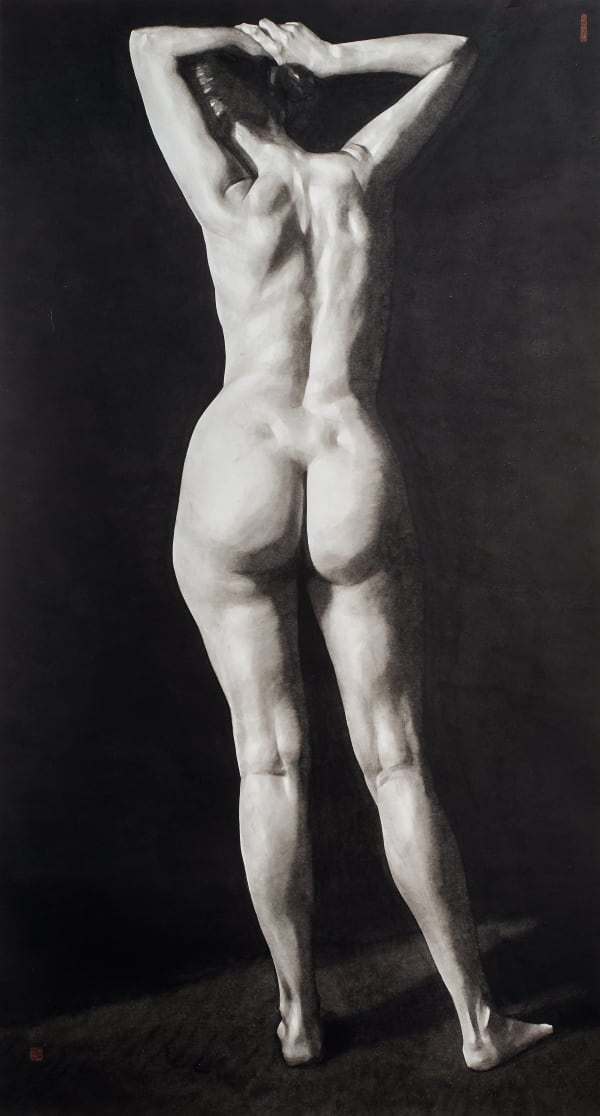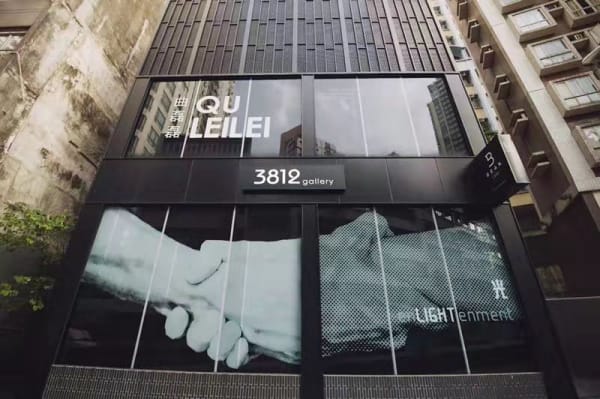enLIGHTenment: QU LEILEI FIRST SOLO INK EXHIBITION IN HONG KONG
There is light, and so there is thought. This is called “enlightenment”.
Light can be external to people, and it can also be within the heart. Light illuminates all things, just as it illuminates the mind. Thus, light is at once reasonable, and inevitable. Light, in its essence, is like art. It can be creative or subversive, two sides to the same coin. Qu Leilei’s Hong Kong Solo Exhibition “enLIGHTenment” attempts to capture the essence of human nature through the properties of light, so that the two may illuminate each other, and lead us on a pursuit of the presence of light.
This exhibition features two major challenges undertaken by Qu Leilei in recent years. The Facing the Future series uses human hands to express ideas which transcend class, race, gender and culture to represent the opportunity, challenge and crisis of facing the world, and call to explore the commonality of humanity around the world. The series Brush, Ink, Light, Shadow depicts full-size nude figures in a return to the pure pursuit of art, faces classicalism with a modern spirit, and pursues the lighting and depth of European Renaissance painting in Chinese ink and scroll paper, with a clear goal of expanding the language of Chinese ink painting.
For celebrated art historian Rose Kerr, Qu Leilei represents a successful fusion between the painting of East and West: “Some ink painters have chosen to push boundaries by making traditional styles more abstract or ornamented. By contrast Leilei has sought to blend descriptive, realistic styles of the European Renaissance with Chinese ink painting.”
The challenge in contemporary ink painting is in how to use a uniquely personal style to present universal, profound ideas. Unlike other artists who seek revolution in subject matter, Qu Leilei, dubbed a “master of chiaroscuro in ink,” has chosen a much more difficult path-to harmonize Western painting and Chinese ink art on a technical level. “Light contrast” is a painting technique developed in the European Renaissance which uses intricate layering of light and shadow to create a sense of three-dimensional “verisimilitude.” Qu Leilei employs the same technique in his ink paintings, rather than in oil. In order to affect this clash between East and West, Qu Leilei discarded the line-based principles of Chinese ink painting in favor of forming brushstrokes from the three colors black, white and grey. In traditional Chinese painting, these three colors represent yin, yang and the balance between them. In Western painting, the light and shadow in shapes conveys a three-dimensional effect.
How can Chinese ink painting without lines to support it use a modern visual language to realize what Qu Leilei dubs “creative heritage”? The answer is to use light. Traditional Chinese ink painting does not depict light, but Qu Leilei employs methods that emphasize the sense of light. The light, shadows and shapes in his paintings all depend on light. Such distinctions as distance and volume are distinguished through light. In this way, his works diverge markedly from traditional Chinese painting. This is the “creative” side. But deep down, Qu Leilei carries on the traditions of the Chinese literati, insisting on using only Chinese brush, ink and scroll paper. This is the “heritage.” In this way, his paintings possess the verisimilitude of Western painting as well as the spirit resonance of Chinese painting. “I hope to use my own forms to create a quality akin to sculpture.” Qu Leilei’s insight into beauty explains what the “perception of beauty” is-he sets these beautiful, marble-like forms against flower, plant and vine patterns, not only creating contrasts between structure and texture, but also reaching a touching harmony between circle and line, motion and stillness. Michael Sullivan has called Qu Leilei’s skillful interpretation of the integration between Western realism and Eastern conceptual imagery a “new literati painting” that best approximates the Chinese literati ideal.
Before the Renaissance, light only lingered on the head, limited to the realm of the halo. But after the Renaissance, light was no longer just decoration. It could cause transitions between bright and dark, light and shadow, radiate real experience, and reveal burning passions. What followed, whether it was in the round mental illumination of Impressionism, or the direct penetration of Expressionism, light has always remained the root of life and a symbol of eternity. As an artist with a sense of historical mission, Qu Leilei is well aware of the importance of “light,” and the importance of how it is used. Light is a source of energy on which all life depends, and has been bestowed with implications of enlightenment, freedom and democracy. Though light is fleeting, it is also expansive and contagious. It can spread its brightness infinitely in all directions, and extend its force so much that it can be transformed into sound. And the times summon it. The awakening of the humanist spirit summons it.
There is light, and so there is thought. This is called enlightenment.
In Michael Sullivan’s summation, Qu Leilei has “combined brilliant brush and ink technique with sympathetic insight into the character of the subject.” Influential art historian and critic Chen Chuanxi says, “To paint well and enter the annals of art history, one must meet the following conditions: technique, originality or clear individuality, beauty, and social influence. Qu Leilei’s works meet the four conditions for entry into the annals of art history.” Qu Leilei says, “I just hope to express the reality of life with as much clarity as possible, to present an interpretation of the world that also takes into account the thoughts of others. I can learn more this way.”
With thought, there is enlightenment.
Art is a carrier for light, and also arises from it. We imbue art with our insights and emotions, and internalize its power, making it the presence of light. “Lei”, in Chinese, draws from the meaning and substance of light in a pursuit of the essence of art. And so, there is light.
-
 Qu Leilei 曲磊磊, United, 2017
Qu Leilei 曲磊磊, United, 2017 -
 Qu Leilei 曲磊磊, On We Go, 2014
Qu Leilei 曲磊磊, On We Go, 2014 -
 Qu Leilei 曲磊磊, Synergy, 2017
Qu Leilei 曲磊磊, Synergy, 2017 -
 Qu Leilei 曲磊磊, Compassion, 2016
Qu Leilei 曲磊磊, Compassion, 2016 -
 Qu Leilei 曲磊磊, Miracle, 2014
Qu Leilei 曲磊磊, Miracle, 2014 -
 Qu Leilei 曲磊磊, Star 星星, 2012
Qu Leilei 曲磊磊, Star 星星, 2012 -
 Qu Leilei 曲磊磊, The Kneeling Claire 蹲著的克雷爾, 2015
Qu Leilei 曲磊磊, The Kneeling Claire 蹲著的克雷爾, 2015 -
 Qu Leilei 曲磊磊, Antonia on the Floral Blanket 《花毯上的安東妮婭》, 2014
Qu Leilei 曲磊磊, Antonia on the Floral Blanket 《花毯上的安東妮婭》, 2014 -
 Qu Leilei 曲磊磊, Claire with a Silk Scarf 《披絲巾的克雷爾》, 2016
Qu Leilei 曲磊磊, Claire with a Silk Scarf 《披絲巾的克雷爾》, 2016 -
 Qu Leilei 曲磊磊, Natalie Lying in the Dark 躺在暗背景中的娜塔麗, 2015
Qu Leilei 曲磊磊, Natalie Lying in the Dark 躺在暗背景中的娜塔麗, 2015 -
 Qu Leilei 曲磊磊, The Side Kneeling Antonia 側跪的安東妮婭, 2017
Qu Leilei 曲磊磊, The Side Kneeling Antonia 側跪的安東妮婭, 2017 -
 Qu Leilei 曲磊磊, Antonia Standing in the Dark 《站在暗背景中的安東妮婭》, 2016
Qu Leilei 曲磊磊, Antonia Standing in the Dark 《站在暗背景中的安東妮婭》, 2016























